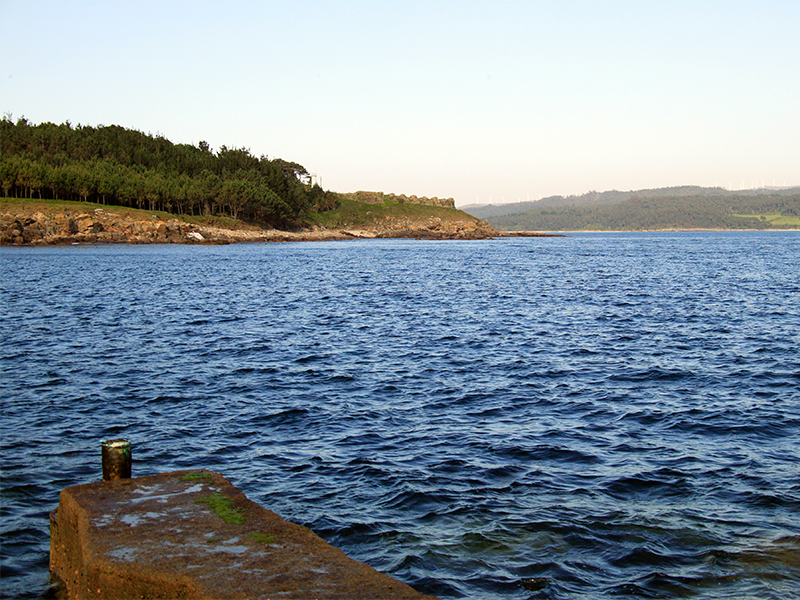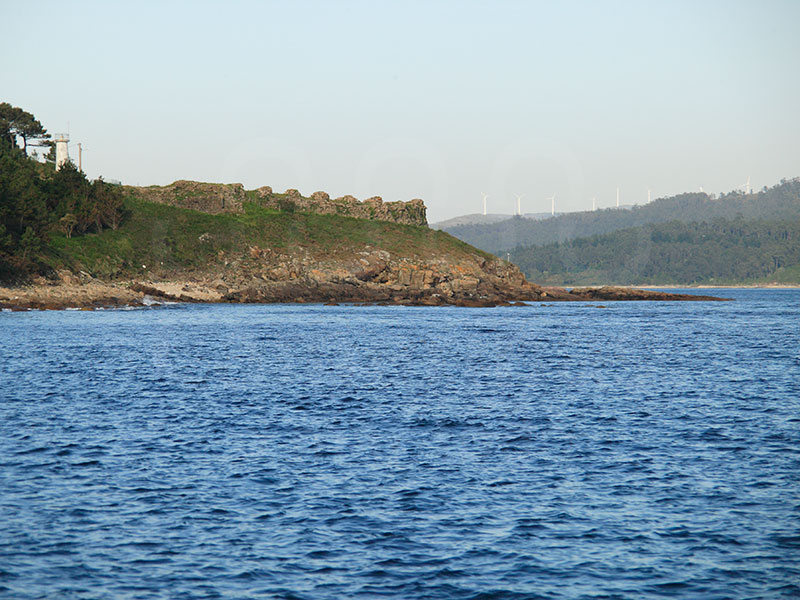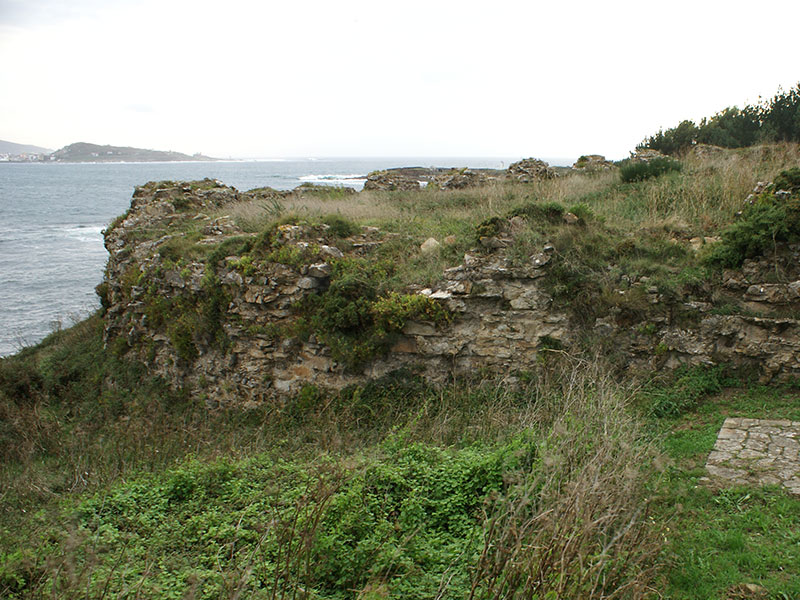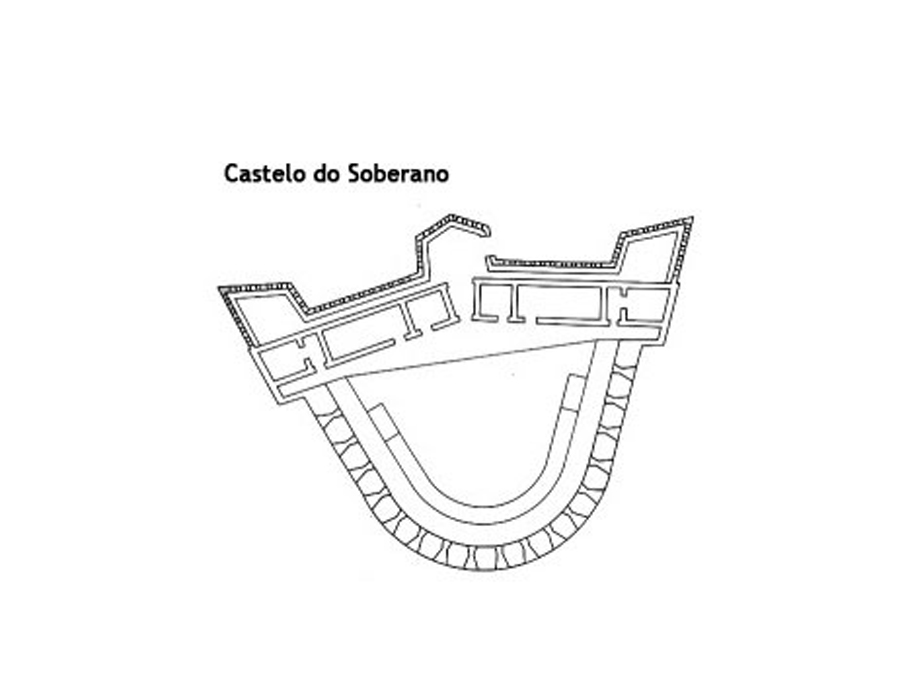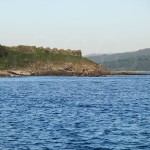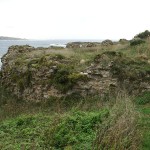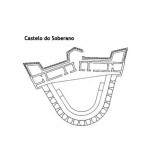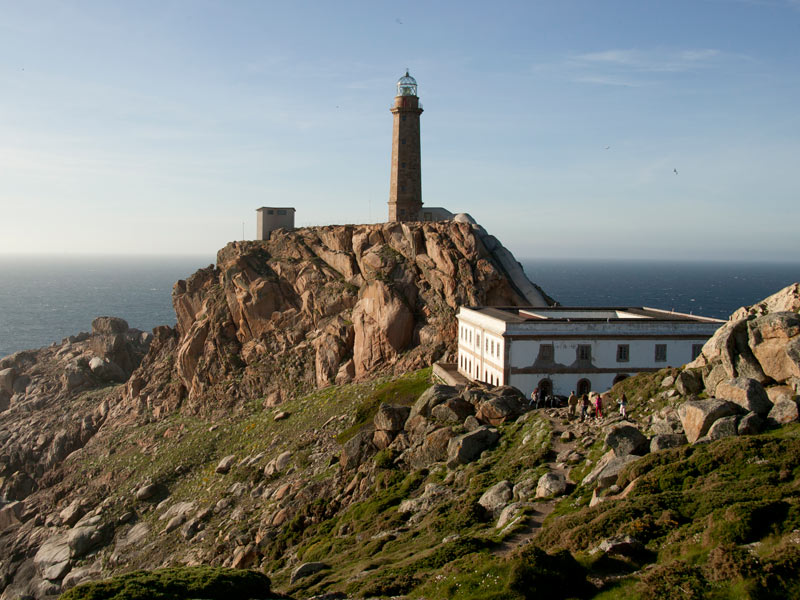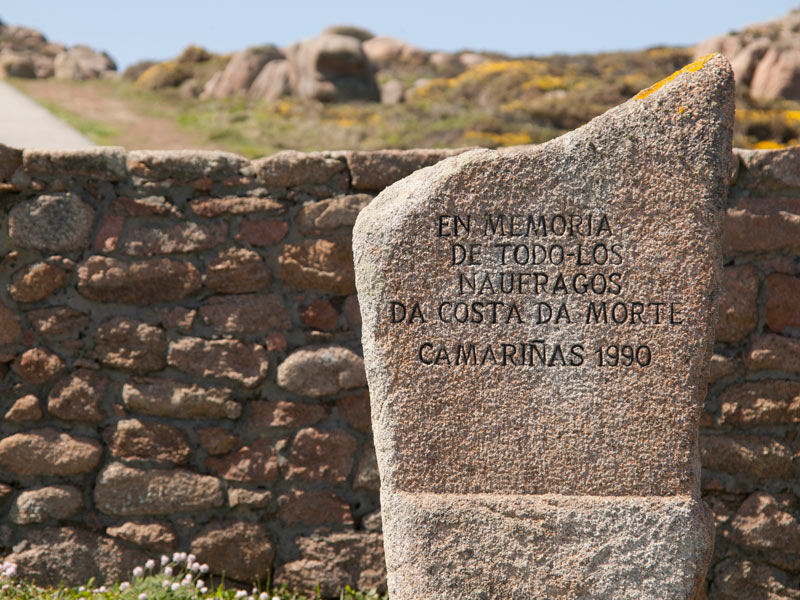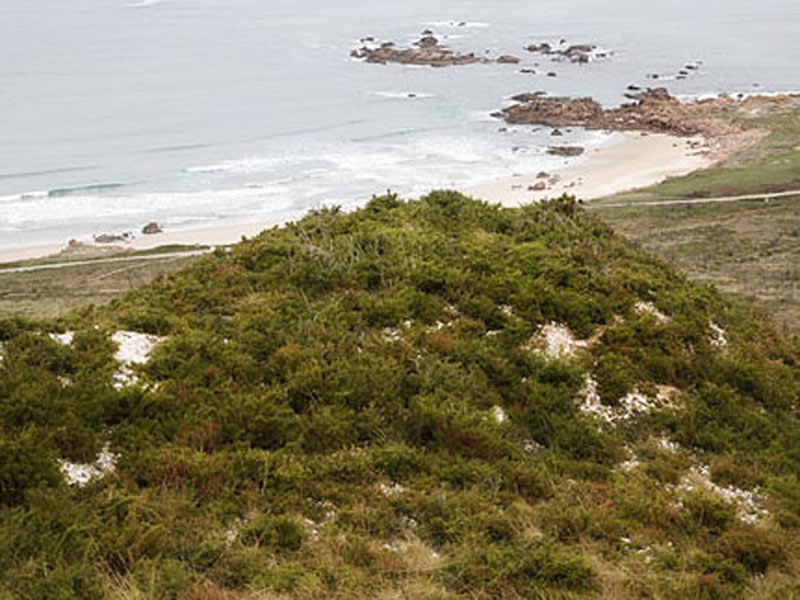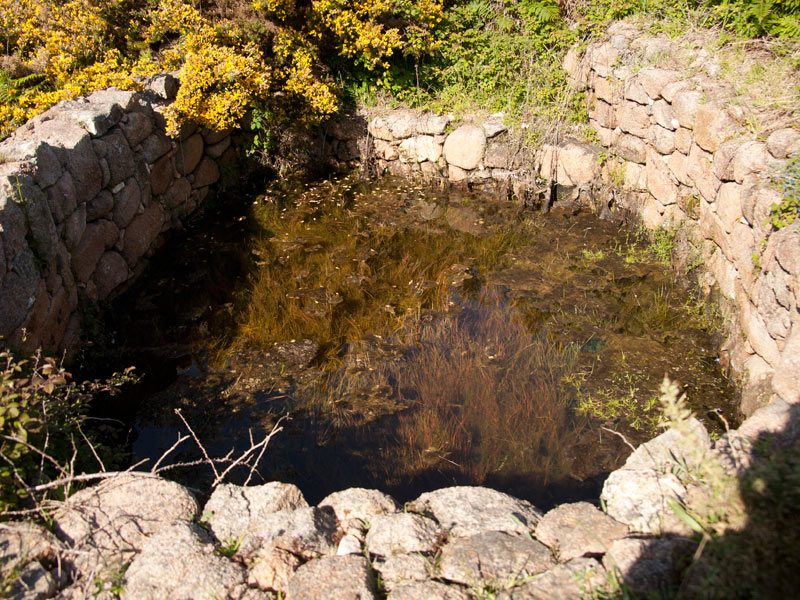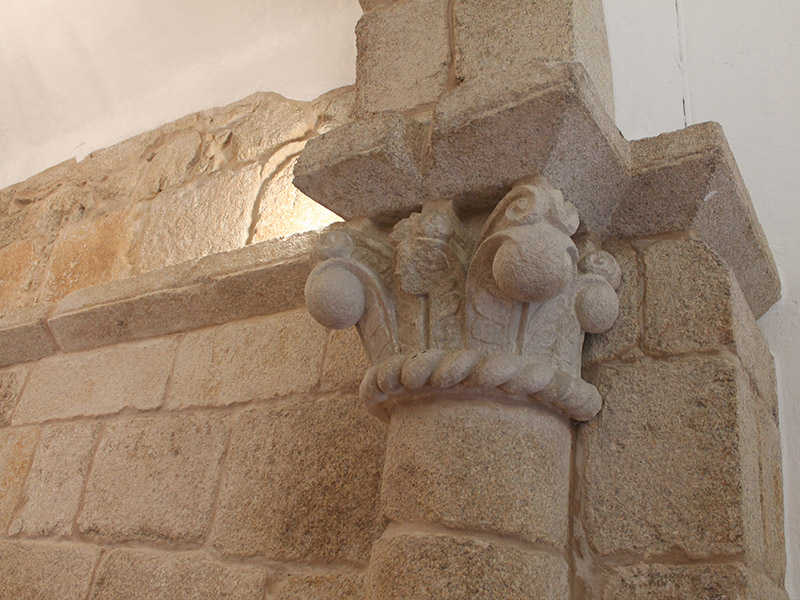The Camariñas ria, as well as others all over the Galician coast, was an important strategic location during Europe’s 16th, 17th and 18th centuries’ naval battles.
In the mid-17th century began the construction of fortifications for the defence of this coastal area, and already in 1740, part of the Camariñas Battery was built. In 1801 another battery was built in Muxía, in front of this point, to defend the whole ria.
The Soberano Battery, also known as Soberano Castle, consisted of an inland-facing walled fortress with a bastion, two half bastions and a moat in between them. The entrance was located on one side of the central bastion. For the defence of the sea-facing side, a curved battery with seventeen arrowslits was built. Between the two enclosures, a nave served as an armoury, warehouse and garrison.
Traces
It was built with large granite blocks. Currently, only the foundations and part of the lower area of the outer wall are preserved.
After it had served its defensive purpose, it was dismantled in the 1940s and its remains were used to build the current wharf, where you can see the cannons, now used as moorings.
